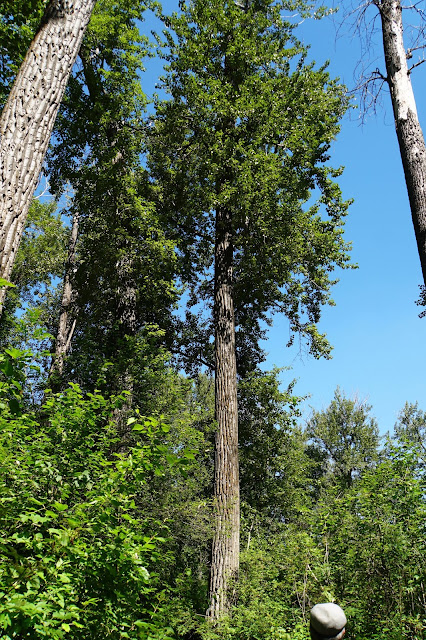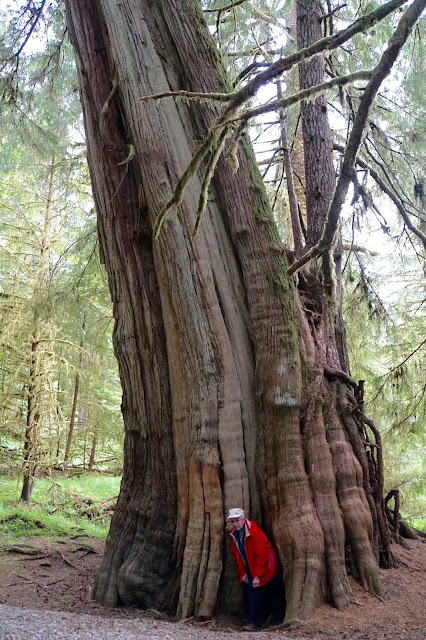The last post took us as far west as possible this trip. I posted about the communities along Highway 16 from east to west, not in the order we explored them. Now we will start from Prince George and travel north for a while.
Mr. PG welcomes everyone to Prince George.
Mr. PG welcomes everyone to Prince George.
Northern Lights Estate Winery, established in 2015, is known as British Columbia’s most northern winery. Yes, it is too far north to grow grapes but there are many other fruits and berries that make great wine.
The winery tour was very comprehensive. From the patio the view of the Nechako River is outstanding and features apple, pear and cherry trees.
Across the road a profusion of rhubarb, blackberries, hascaps and more thrive in the garden.
Fruit wines are typically made from frozen, whole fruit, which allows the fruit to break down faster and create a stronger product. Altogether they produce delicious varieties of wine.
The bistro patio is a beautiful setting for lunch with old and new friends. We enjoyed a lovely lunch with a Prince George resident who took the winery tour as part of a staycation.
Cottonwood Island Park meanders along the Nechako River.
Tree Bark Carvings encourage visitors to look in all directions for new delights.
The miniature railway, complete with an engineer and commentary, journeys around the outdoor displays.
Penny Station was carefully moved over 120 km to the Museum. It crossed the Fraser River twice, first over an ice bridge and then over a conventional bridge.
The interior has been restored to its original state including the station masters office and living quarters in the back.
In 1913 the Nechacko Coach was built as a touring car. It later became a business car then converted to an entertainment executive car specifically for Expo 86.
This turntable was originally installed in Prince George in 1913 and moved to the museum in 1990. It is not only a valuable exhibit, but it also helps move rolling stock around the museum site.
After the miniature train traveled through the beehive burner we learned why they are no longer used to burn excess sawdust and wood chips from sawmills. The wood waste is now used as a component in various products such as pellet fuel, particleboard and mulch.
This pine cone collector is a mystery question for visitors. It was suspended from a helicopter above a standing tree. When lowered over the tree and pulled back up it harvested pine cones to use in replanting the forest.
Who recognizes these telephone styles?
Prince George is home to one of three drive-in movie theatres in BC. In early July the sun doesn’t set until after 10:00 so we didn’t wait up for a late movie.
With the unpredictability of resource industries Prince George has turned to wholesale and retail trade, manufacturing and other long term prospects to keep its 74,000 residents employed and in town.

























































